The Williams %R indicator serves as a valuable tool for traders seeking to pinpoint potential market reversals and entry/exit signals. However, mastering its intricacies and leveraging its full potential can be a complex endeavor.
By breaking down the process into 10 straightforward steps, traders can navigate the Williams %R indicator with precision and confidence. Each step unfolds a crucial aspect of this momentum oscillator, offering insights into interpreting readings, formulating strategies, and maximizing its benefits.
As traders delve into these steps, they will uncover a structured approach to harnessing the power of the Williams %R indicator in their trading endeavors.
Understanding Williams %R Indicator
The comprehension of the Williams %R Indicator provides traders with a valuable tool for evaluating market conditions and making strategic trading decisions. This momentum indicator assists in identifying overbought and oversold conditions within the market, presenting opportunities for traders to enter or exit positions. The Williams %R indicator operates on a scale from 0 to -100, with values above -20 signaling an overbought market and values below -80 indicating an oversold market. By utilizing the highest high, lowest low, and closing prices over a specified period, typically 14 days, this indicator calculates %R to provide traders with valuable insights into market momentum.
Understanding the signals generated by the Williams %R indicator is crucial for traders looking to navigate various market conditions effectively. By interpreting the overbought and oversold levels indicated by the Williams %R, traders can make informed decisions regarding when to buy or sell assets, enhancing their overall trading strategies.
Calculating Williams %R Formula
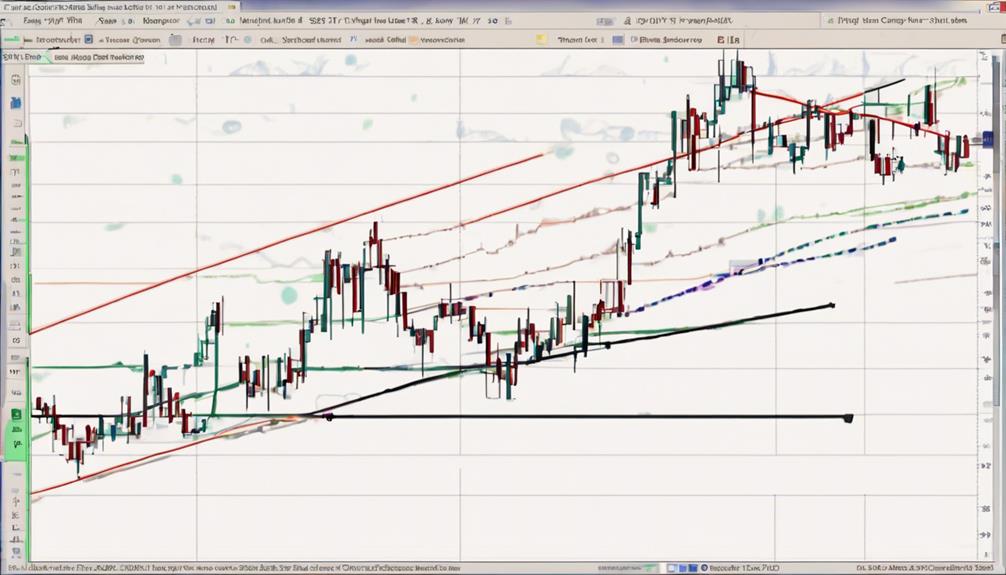
Incorporating the Williams %R formula into market analysis enhances traders' ability to gauge asset price dynamics effectively. The formula is calculated as (Highest High – Close) / (Highest High – Lowest Low), comparing the closing price to the high-low range over a specified period. This calculation provides a value between 0 and -100, indicating the current price's position relative to the highest high.
To better understand market conditions, traders can utilize the Williams %R indicator by following these steps:
- Calculate the highest high by finding the maximum price within the chosen period.
- Determine the lowest low by identifying the minimum price over the same period.
- Subtract the closing price of the asset from the highest high.
- Divide the result by the difference between the highest high and lowest low to obtain the Williams %R value.
Interpreting Williams %R Readings
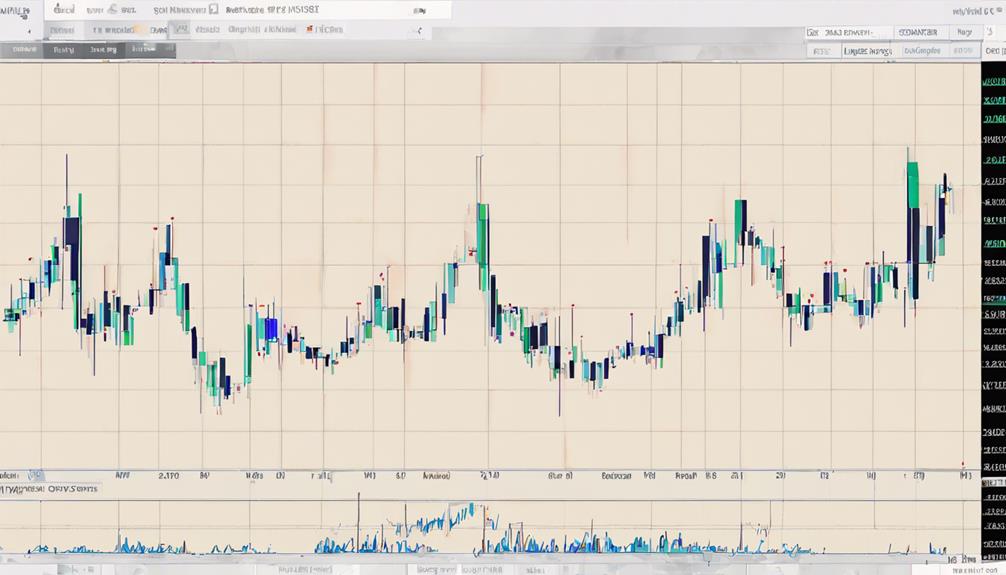
Utilizing the Williams %R indicator allows traders to effectively interpret market conditions based on specific readings. Williams %R readings above -20 indicate overbought conditions, suggesting that the market may be due for a potential reversal or correction.
Conversely, readings below -80 signal oversold market conditions, indicating that the asset may be undervalued and potentially poised for a price increase. The -50 midpoint on Williams %R is a crucial reference point for determining trend changes.
Crosses above -50 on Williams %R can suggest a bullish trend shift, while crosses below -50 may indicate a bearish trend reversal. Traders should pay close attention to these critical levels to make informed decisions about entry and exit points in the market.
Utilizing Williams %R for Trading
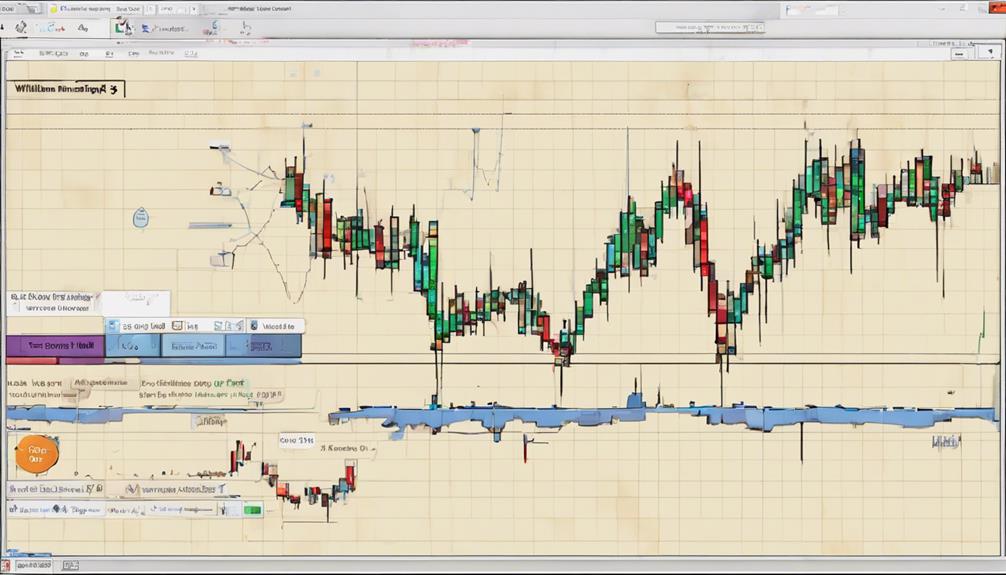
Enhancing trading strategies with the Williams %R indicator can provide valuable insights into market dynamics and potential entry/exit points. When utilizing Williams %R for trading, traders can benefit from the following:
- Identifying Overbought or Oversold Readings: Williams %R ranges from 0 to -100, with readings above -20 signaling overbought conditions and readings below -80 indicating oversold conditions.
- Spotting Entry Signals: Traders can use Williams %R to identify buying opportunities when it falls below -80 and selling opportunities when it rises above -20.
- Understanding Market Sentiment: Williams %R can assist traders in comprehending market sentiment, helping them make informed decisions on market positions.
- Enhancing Trading Strategies: Combining Williams %R with other technical indicators can strengthen trading strategies by providing confirmation for trade signals, increasing the likelihood of successful trades.
Implementing Williams %R Strategies
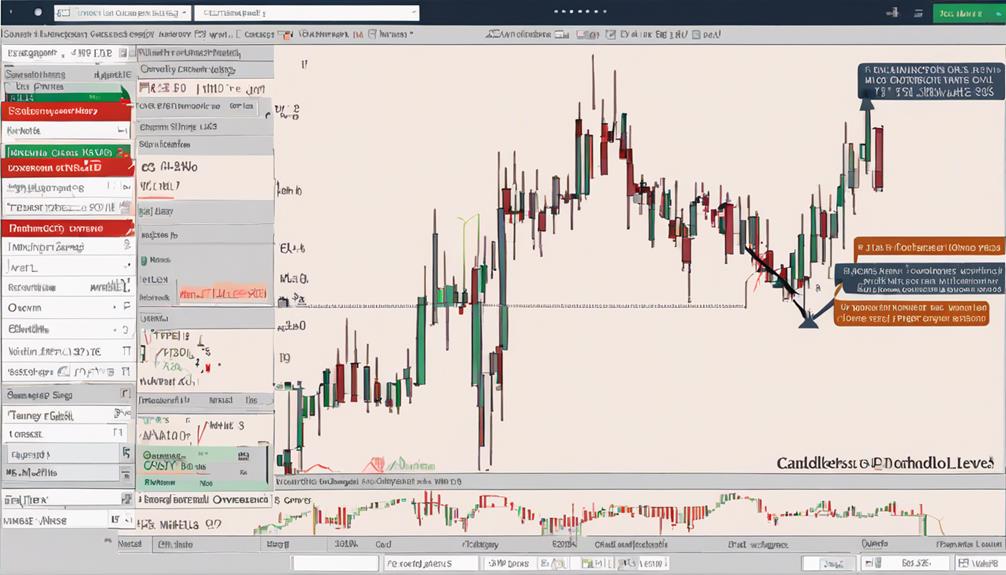
When implementing Williams %R strategies, traders should focus on effective entry points and adhere to strategy implementation tips. Identifying overbought and oversold conditions can guide decision-making, with buying above -80 and selling below -20 being common practices.
Strategy Implementation Tips
Implementing Williams %R strategies requires vigilant monitoring of key levels to identify potential trading opportunities based on overbought and oversold conditions. Traders can utilize the following strategy implementation tips:
- Set clear entry and exit points based on Williams %R readings above -20 and below -80.
- Hold positions until opposite signals are reached to capture potential trend reversals indicated by Williams %R.
- Combine Williams %R with other technical indicators for enhanced trading decisions and confirmation signals.
- Utilize spread bets and CFDs alongside Williams %R strategies for leveraged trading opportunities.
Effective Entry Points
To effectively implement Williams %R strategies, identifying optimal entry points is crucial for making informed trading decisions. When the Williams %R indicator crosses below -80, it generates buy signals, indicating potential entry points for long positions.
Conversely, sell signals are triggered when the indicator crosses above -20, suggesting entry points for short positions. It is essential to confirm these signals by aligning them with other technical indicators and considering the broader market context and price action.
Managing Risks With Williams %R
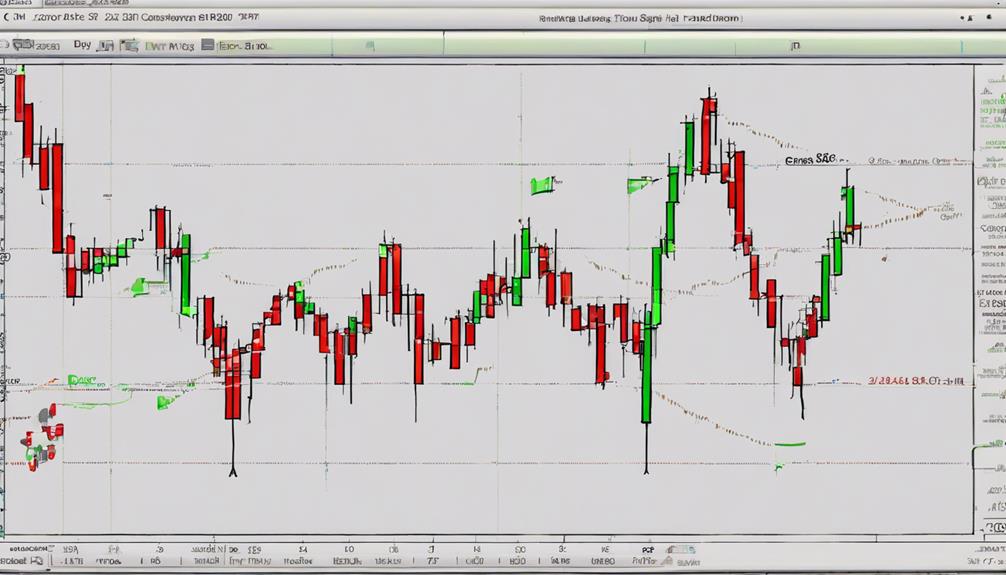
In the realm of trading, effectively managing risks with the Williams %R indicator is essential for prudent decision-making and safeguarding investment capital. The Williams %R can help traders identify overbought and oversold market conditions, enabling them to make informed decisions.
To manage risks effectively using Williams %R:
- Identify Overbought and Oversold Levels: Williams %R signals when the market is overbought or oversold, indicating potential reversal points.
- Timing Entry and Exit Points: Monitoring Williams %R can assist in determining optimal times to enter or exit trades, reducing risk exposure.
- Implement Stop-Loss Orders: Setting stop-loss orders based on Williams %R signals can help limit potential losses and protect capital.
- Combine with Position Sizing: Integrating Williams %R with position sizing strategies can enhance overall risk management effectiveness.
Maximizing Williams %R Benefits
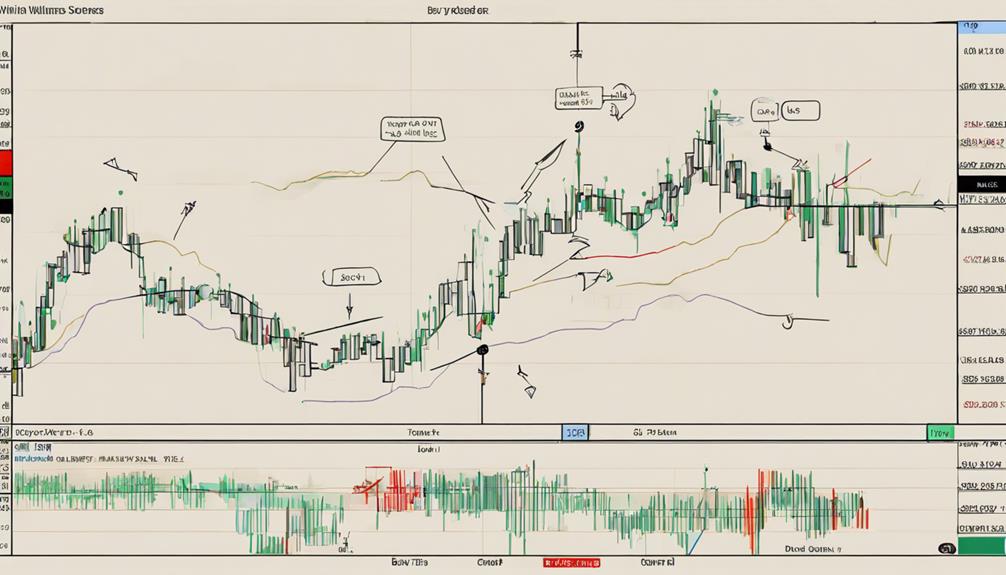
Maximizing the benefits of the Williams %R indicator involves strategically incorporating it with complementary technical indicators to enhance trading decisions. Williams %R is valuable for identifying overbought conditions when its readings surpass -20 and oversold conditions when they drop below -80.
To optimize the usage of Williams %R, traders should combine it with other technical tools to validate signals and avoid false trading indications. Confirming Williams %R signals with additional analysis is crucial, as this indicator can persist in overbought or oversold territories for extended periods.
Understanding the default thresholds of -20 for overbought and -80 for oversold is essential for accurate interpretation and effective decision-making. By integrating Williams %R with other indicators, traders can gain a more comprehensive view of market conditions and improve the accuracy of their trading strategies.
This strategic approach enhances the reliability and effectiveness of utilizing Williams %R in navigating market trends.
Applying Williams %R in Markets
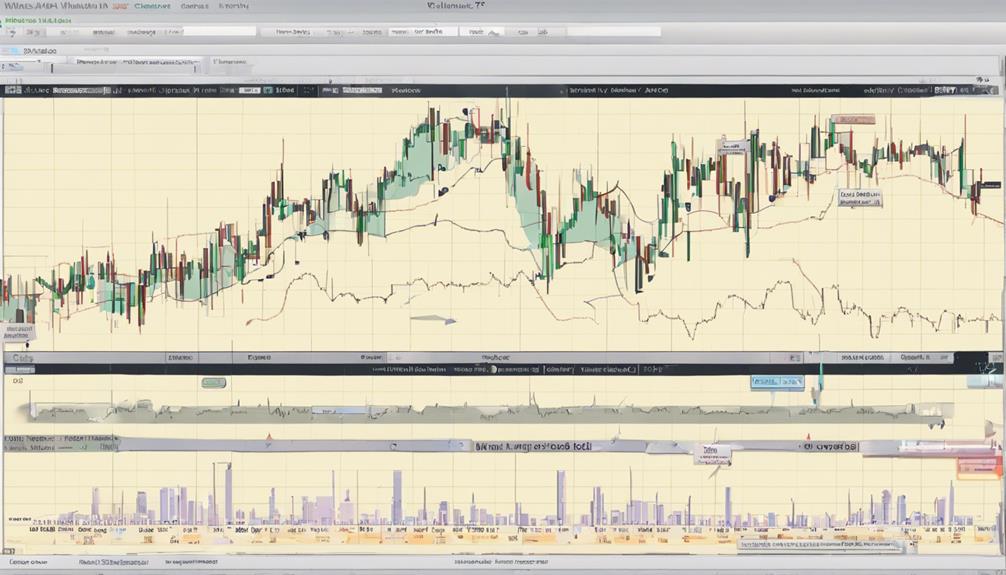
The discussion on applying Williams %R in markets revolves around understanding the basics of this indicator. Interpreting %R signals effectively is crucial. Implementing proven R indicator strategies is also important.
Williams %R Basics
Utilizing the Williams %R indicator in market analysis provides traders with a method to identify potential entry and exit points based on momentum. When applying Williams %R in markets, traders should consider the following basics:
- Williams %R ranges from 0 to -100, with overbought conditions above -20 and oversold conditions below -80.
- Traders can use Williams %R to identify potential entry and exit points in the market based on momentum.
- Signals of overbought and oversold markets can guide trading decisions when using the Williams %R indicator.
- The indicator calculates based on the highest high, lowest low, and closing price in the last 14 periods for market analysis.
Understanding these basics can aid traders in interpreting market movements effectively.
Interpreting %R Signals
When analyzing market trends with the Williams %R indicator, interpreting %R signals plays a crucial role in identifying potential trading opportunities. Williams %R readings above -20 indicate overbought market conditions, suggesting potential selling opportunities, while readings below -80 signal oversold market conditions, indicating potential buying opportunities.
Traders can interpret %R signals by watching for crossovers above -20 for bullish trends and below -80 for bearish trends. These signals help in recognizing possible trend reversals or continuations based on market movements. It is advisable to confirm %R signals with other technical indicators to enhance the accuracy of trading decisions.
R Indicator Strategies
To effectively implement R Indicator strategies in markets, traders can capitalize on the signals provided by the Williams %R indicator to make informed trading decisions.
- Buy when the indicator is above -80 and sell when it's below -20.
- Interpret overbought signals as bullish and oversold signals as bearish for trading decisions.
- Hold positions until opposite signals are reached to maximize profits or minimize losses based on Williams %R movements.
- Consider using spread bets and CFDs for trading with the Williams %R indicator to take advantage of market movements.
Implement Williams %R strategies by analyzing indicator movements to guide entry and exit points in various markets. By following these strategies, traders can effectively utilize the Williams %R indicator for successful trading outcomes.
Enhancing Trading Skills With Williams %R
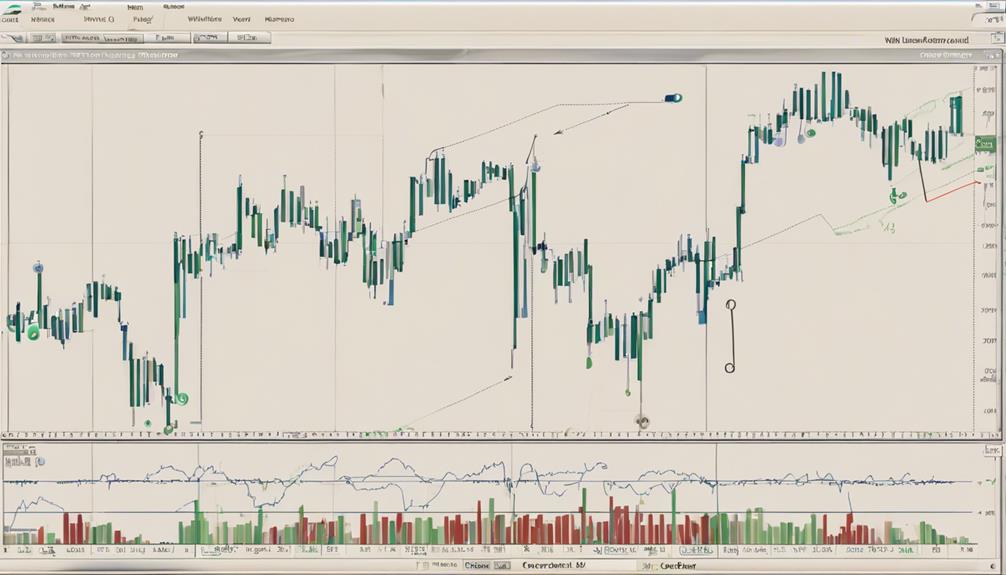
Enhancing trading skills can be achieved by incorporating the Williams %R indicator to identify optimal entry and exit points based on market conditions. Williams %R helps traders gauge momentum and pinpoint potential entry opportunities when the market is oversold, indicated by readings below -80.
Traders can use this oversold condition as a signal to consider buying, anticipating a potential price reversal. By waiting for the indicator to move back above -80, traders can confirm the entry point aligns with the market dynamics. This method allows traders to enter positions at advantageous levels, maximizing profit potential.
Combining Williams %R with other technical indicators can further enhance trading strategies by providing additional confirmation signals. Understanding how to interpret Williams %R signals accurately is crucial for traders looking to improve their decision-making processes and overall trading performance. By leveraging the insights provided by this indicator, traders can make more informed decisions, ultimately optimizing their trading approach.
Optimizing Williams %R Performance

In order to optimize the performance of the Williams %R indicator, adjusting its threshold levels tailored to specific securities and market conditions can be a strategic approach. When fine-tuning the Williams %R settings, considering the investment objectives is crucial as different securities may require varying levels of sensitivity.
Additionally, setting the overbought and oversold thresholds too high for the lookback period might result in fewer signals, potentially missing out on timely entry or exit points. Conversely, setting these thresholds too low could lead to more frequent but possibly false signals.
To enhance the effectiveness of Williams %R, it is essential to correct its settings regularly based on changing market dynamics. By adapting the indicator to current conditions, traders can improve its accuracy in signaling potential trade opportunities. Moreover, combining Williams %R with other technical tools such as trend lines or moving averages can further refine its performance and assist in confirming signals.
What Are the Key Differences Between the Simple Steps and the Complete Guide for Navigating the Williams %R Indicator?
When it comes to navigating Williams %R indicator, the key differences between the simple steps and the complete guide lie in the level of detail and explanation provided. The simple steps offer a quick overview, while the complete guide delves into more advanced strategies and in-depth analysis.
Frequently Asked Questions
How Do You Use William R Indicator?
To utilize the Williams %R indicator effectively, traders can identify overbought and oversold market conditions. Values above -20 signal overbought, below -80 signal oversold. Buy when below -80 and sell when above -20 for potential signals.
What Is the Formula for Williams %R?
Williams %R formula calculates the difference between the highest high and the closing price, relative to the high-low range. This oscillator ranges from 0 to -100, indicating overbought or oversold conditions. Values near -20 suggest overbought, while -80 signifies oversold.
What Is the Best Setting for Williams %R?
The best setting for Williams %R varies based on market conditions and individual trading strategies. Traders often adjust the default levels of -20 and -80 to better suit their needs. It's crucial to confirm signals with other indicators for improved accuracy.
What Is the Difference Between RSI and Williams R Indicator?
The Relative Strength Index (RSI) and Williams %R indicator both help traders gauge market conditions. RSI ranges from 0-100, while Williams %R spans 0 to -100, with the latter being more volatile due to a different scale and calculation method.
Conclusion
In conclusion, mastering the Williams %R indicator can enhance trading strategies and decision-making processes in financial markets.
By following the ten simple steps outlined in this article, traders can effectively navigate market conditions and identify potential entry and exit points.
Remember, Rome wasn't built in a day, and patience is key when utilizing this powerful momentum oscillator to optimize trading performance.
